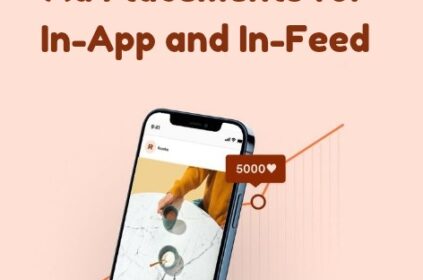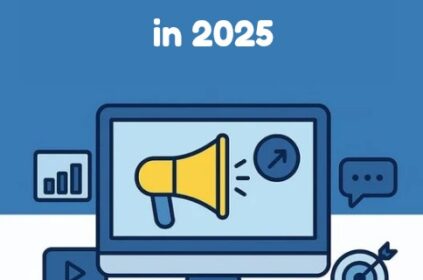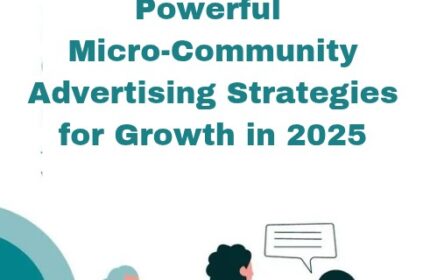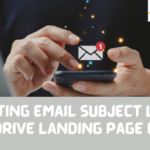You’ve poured your heart and soul into crafting a marketing campaign that you believed would skyrocket your results. But alas, when it comes to conversions, the outcome is far from what you envisioned. What could be the culprit, you wonder? Let me tell you: It might just be your landing page.
Landing pages, my friend, are the unsung heroes of the digital world. They’re not just pages; they’re powerful tools that have the potential to transform mere website visitors into devoted customers or avid subscribers. Even if your website is a masterpiece of design, it could still fall flat on its face if your landing page isn’t optimized for conversions.
Now, imagine if every click led to a conversion, every visitor turned into a loyal customer, and every subscriber brought you closer to your goals. That’s not a pipe dream; it’s within your reach.
But to make it a reality, you need a landing page that’s not just good, but exceptional. Are you ready to take your marketing game to the next level? It all starts with your landing page.
Studies show that poorly designed landing pages can lead to a 50% drop in conversion rates. That translates to lost leads, lost sales, and lost profits.
The good news is, with a few tweaks, you can transform your landing page from conversion killer to conversion champion. In this post, we’ll unveil the 7 most common landing page mistakes that are costing you conversions and show you exactly how to fix them.
Whether you’re a seasoned digital marketer or a beginner looking to boost your conversions, this guide will equip you with the knowledge you need to create landing pages that drive results.
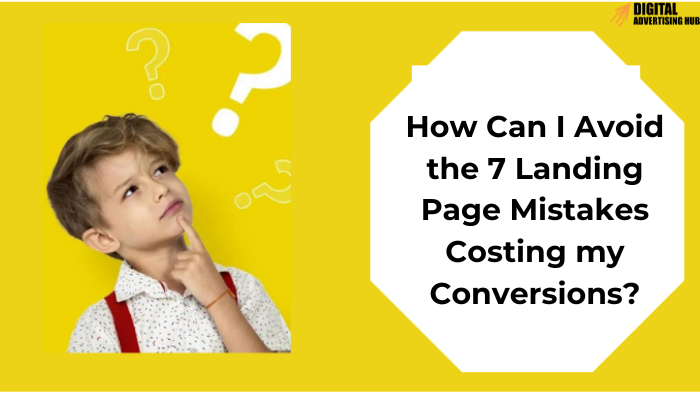
Mistake #1: Unclear Value Proposition
Imagine walking into a store with a jumbled display of products and no sales staff to explain their benefits. That’s what visitors experience when your landing page lacks a clear value proposition.
They land on your page, unsure of what you offer and why they should care. This confusion leads to them bouncing off the page without taking any action.
How can you avoid the mistake?
#1. Craft a strong headline that immediately grabs attention and highlights the key benefit your product or service offers.
#2. Use clear and concise language that speaks directly to your target audience’s pain points. Consider incorporating power words that evoke urgency or curiosity. A/B test different headlines to see which ones resonate best with your audience.
#3. Think about the core problem your product or service solves. Instead of technical jargon, use language your ideal customer understands. Here’s an example:
Original Unclear Headline: “Introducing the XYZ Widget!”
Improved Clear Headline: “Struggling with Inefficiency? The XYZ Widget Boosts Productivity by 30%.”
This revised headline instantly conveys the value proposition: the XYZ Widget helps businesses become more productive. Do you understand? Let us explore the second common mistake.
Mistake #2: Confusing Landing Page Design and Navigation
A visually cluttered landing page with a confusing navigation menu is a surefire way to overwhelm visitors and send them scrambling for the back button. Remember, your landing page should have a singular focus: driving conversions.
Extra navigation elements like menus and links to other pages distract visitors from taking the desired action.
#1. Hence, prioritize a clean and uncluttered design that guides the visitor’s eye towards your call to action (CTA).
#2. Utilize white space effectively to create a sense of balance and focus on key elements. Optimize images and videos for fast loading speeds.
#3. Ensure a clear hierarchy of information, with the most important details positioned prominently.
Think of your landing page as a direct mail flyer with one clear message and a single call to action. Avoid including links to your main website or social media pages.
By simplifying the design and navigation, the improved landing page removes distractions and allows visitors to focus on the value proposition.
Mistake #3: Weak Call to Action (CTA)
You’ve crafted a compelling message and a visually appealing landing page, but if your call to action (CTA) is weak, visitors might not know what to do next. A vague or generic CTA like “Submit” fails to inspire action.
How do you avoid the mistake?
#1. Craft a strong and action-oriented CTA that tells visitors exactly what you want them to do, whether it’s downloading a white paper, signing up for a free trial, or making a purchase.
#2. Use clear and concise language that emphasizes the benefit of taking action. Consider incorporating urgency words like “Now” or “Today” to encourage immediate conversions.

#3. A/B test different CTA button colors, shapes, and text to see which variations generate the most clicks.
#4. Focus on the desired outcome for the visitor. Instead of “Submit,” consider CTAs like “Start Your Free Trial Today” or “Get Your Free Consultation.”

Here’s an example:
Original Weak CTA: “Submit”
This generic CTA fails to communicate the benefit of clicking the button.
Improved Strong CTA: “Download Your Free E-book and Discover 5 Productivity Hacks!”
This revised CTA clarifies the action and entices visitors with a valuable reward for clicking.
Mistake #4: Lack of Social Proof
People are naturally hesitant to be the first ones to try something new. Including social proof elements on your landing page builds trust and credibility, reassuring visitors that your product or service is valuable. Without social proof, visitors might leave your landing page unconvinced.
Tips to Avoid the Mistake
Showcase elements that demonstrate the value others have experienced with your product or service. Here are some effective social proof tactics:
#1. Testimonials: Positive quotes from satisfied customers highlighting the benefits they received.
#2. Case Studies: Detailed stories showcasing how your product or service helped a specific company achieve success.
#3. Logos: Client logos from reputable companies that use your product or service.
#4. Carefully select social proof elements that resonate with your target audience. Testimonials should be from individuals with similar challenges to your ideal customer. Feature case studies with quantifiable results to showcase the effectiveness of your offering.
Gather testimonials from real customers and showcase them prominently on your landing page. Consider including a short video testimonial for added impact. If you have any brand partnerships, leverage their logos to build trust with potential customers.
By incorporating social proof, you leverage the power of social influence to convince visitors that your product or service is a trustworthy option.
Mistake #5: Non-Responsive Design
In today’s mobile-first world, a landing page that doesn’t adapt to different screen sizes is a major conversion killer.
If your landing page appears clunky or unreadable on a smartphone, visitors are likely to abandon ship out of frustration. This translates to missed opportunities to capture leads and sales.
How do you fix the mistake?
#1. Ensure your landing page utilizes responsive design. This means the layout automatically adjusts to fit the screen size of any device, be it a desktop computer, tablet, or smartphone.
#2. Utilize responsive design frameworks or website builders with built-in responsive functionality. Employ mobile-friendly fonts and optimize images for faster loading times on mobile data connections. Test your landing page across various devices to ensure a seamless user experience.
#3. When choosing a web developer or website template, prioritize responsive design capabilities. Avoid using Flash elements or complex animations that might not render properly on mobile devices. Remember, a mobile-friendly landing page caters to a wider audience and increases your chances of capturing valuable leads and conversions.
Mistake #6: Ignoring Mobile Optimization
Even with a responsive design, there’s a crucial difference between a mobile-friendly landing page and a truly mobile-optimized one. Here’s why this distinction matters:
Responsive design ensures your landing page displays correctly on mobile devices, but it doesn’t guarantee an optimal user experience. Landing pages cluttered with text, lengthy forms, or small buttons can be frustrating to navigate on a smaller screen.
This frustration translates into lost conversions, as visitors might abandon the process due to difficulty.
Go beyond responsiveness and actively optimize your landing page for mobile users.
#1. Prioritize conciseness. Use clear and concise headlines, bullet points, and short CTA buttons. Optimize forms by minimizing the number of required fields and utilizing larger touch-friendly buttons. Consider offering alternative conversion options like click-to-call functionality for mobile users.
#2. Think about how users interact with their phones. Large blocks of text are difficult to read on mobile, so focus on delivering your message in a clear and concise way. Ensure your CTA button is prominent and easy to tap with a finger.
By optimizing your landing page for mobile users, you ensure a smooth and frustration-free conversion experience, leading to increased conversions and a positive impact on your bottom line.
Mistake #7: Neglecting A/B Testing
Even the most well-crafted landing page can be improved. The problem is, it can be difficult to know for sure which elements resonate best with your audience.
This is where A/B testing comes in. A/B testing allows you to compare different variations of your landing page to see which one drives the most conversions.
Embrace the power of A/B testing.
#1. Utilize A/B testing tools to compare different versions of your landing page elements, such as headlines, CTAs, images, and layouts.
Track key metrics like click-through rates and conversion rates to identify the variations that perform best. Continuously iterate and refine your landing page based on data-driven insights.
#2. While you might not be directly running the A/B tests, understand the importance of this process. Work with your marketing team or web developer to implement A/B testing on your landing page. By continuously testing and optimizing, you ensure your landing page is constantly evolving to deliver the best possible results.
A/B testing removes guesswork from the equation. It allows you to identify what truly resonates with your target audience and optimize your landing page for maximum conversions. This data-driven approach ensures you’re not leaving valuable conversions on the table.
Conclusion
There you have it! We’ve unveiled the 7 most common landing page mistakes that can cripple your conversion rates. By following these tips and optimizing your landing pages, you can transform them from conversion killers into conversion champions. Remember, a well-designed landing page with a clear value proposition, a strong CTA, and social proof can significantly boost your bottom line.
Don’t stop here! Here are some additional resources to help you on your landing page optimization journey:
- “https://support.google.com/analytics/answer/12979939?hl=en” (A guide to A/B testing from Google)
- “https://unbounce.com/optimization-toolkit/” (Landing page optimization checklist from Unbounce)
- https://adstargets.com/blog/engaging-landing-page-design/ (Engaging Landing Page Design from AdsTargets)
Now it’s your turn! Have you encountered any other landing page mistakes in your marketing endeavors? Share your experiences and insights in the comments below. Let’s keep the conversation flowing and help each other create landing pages that drive results!


